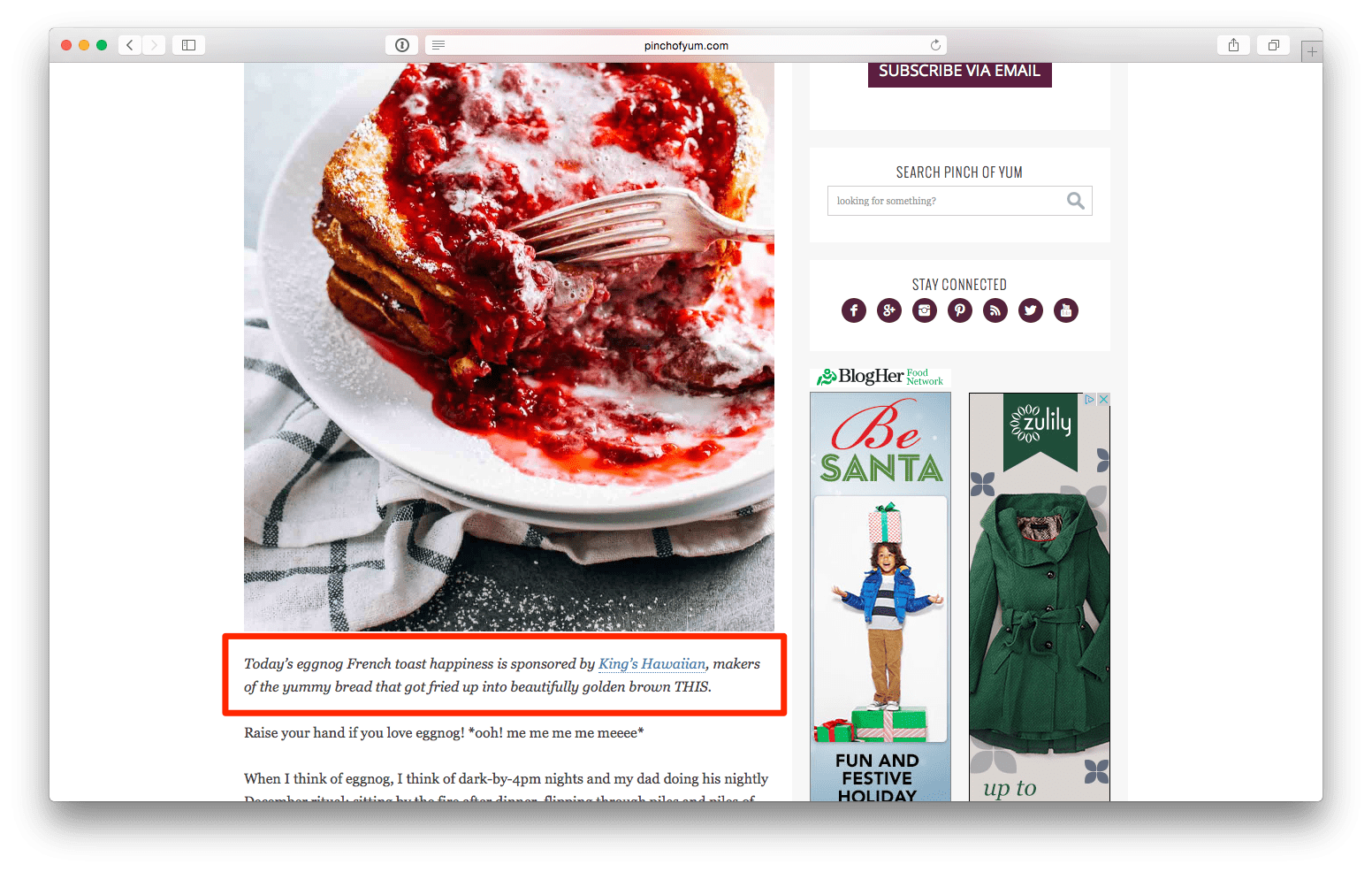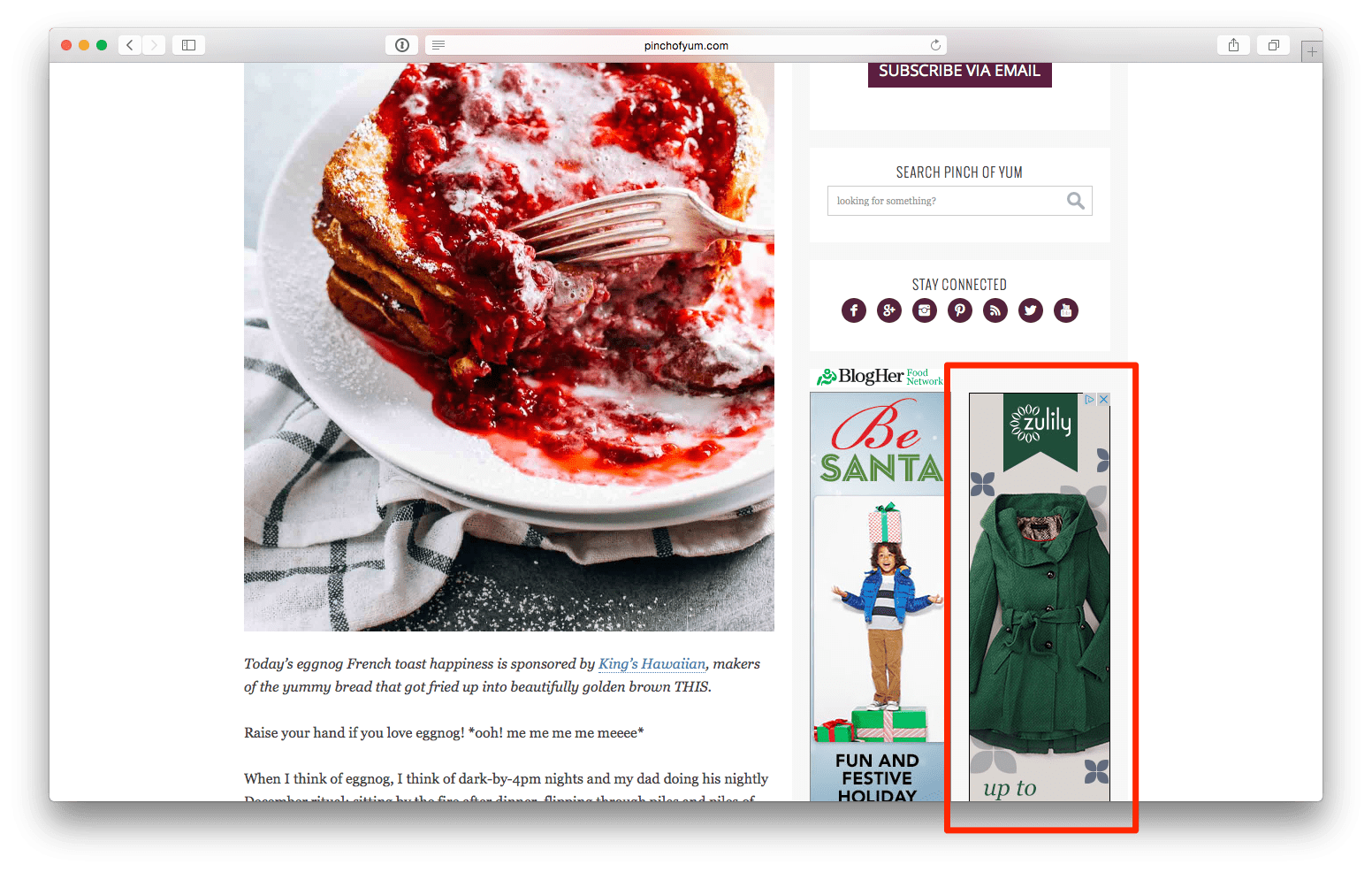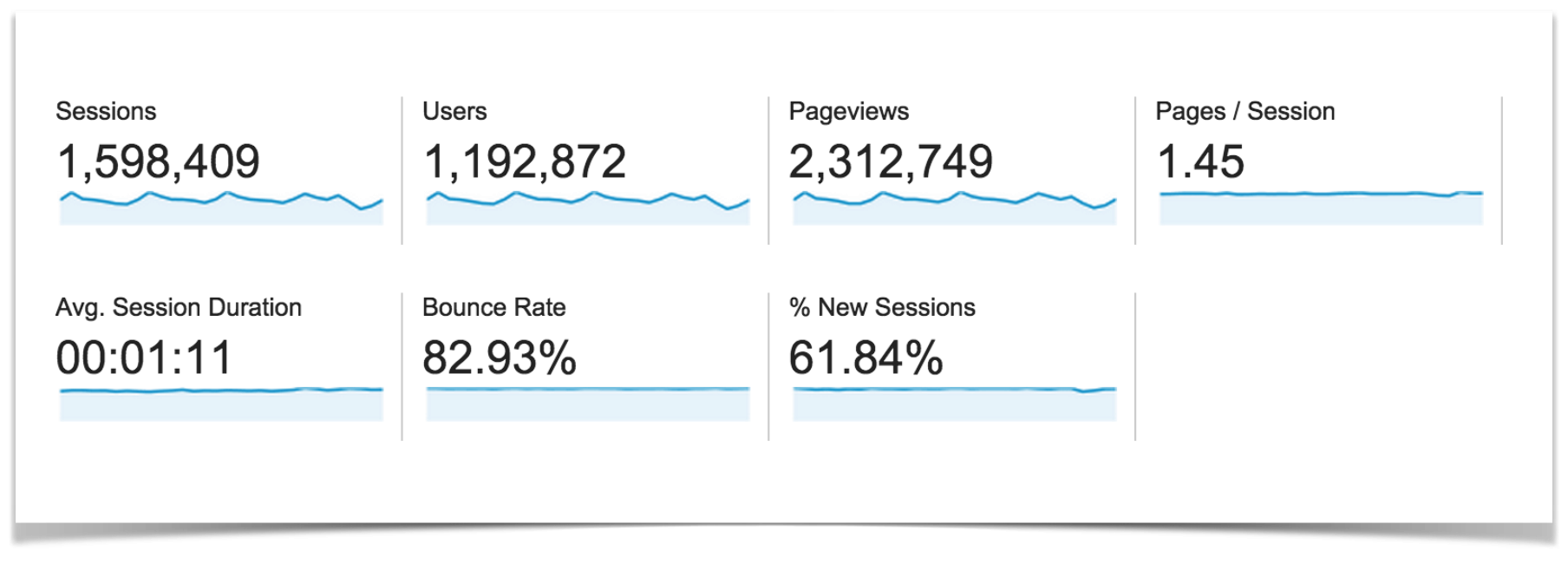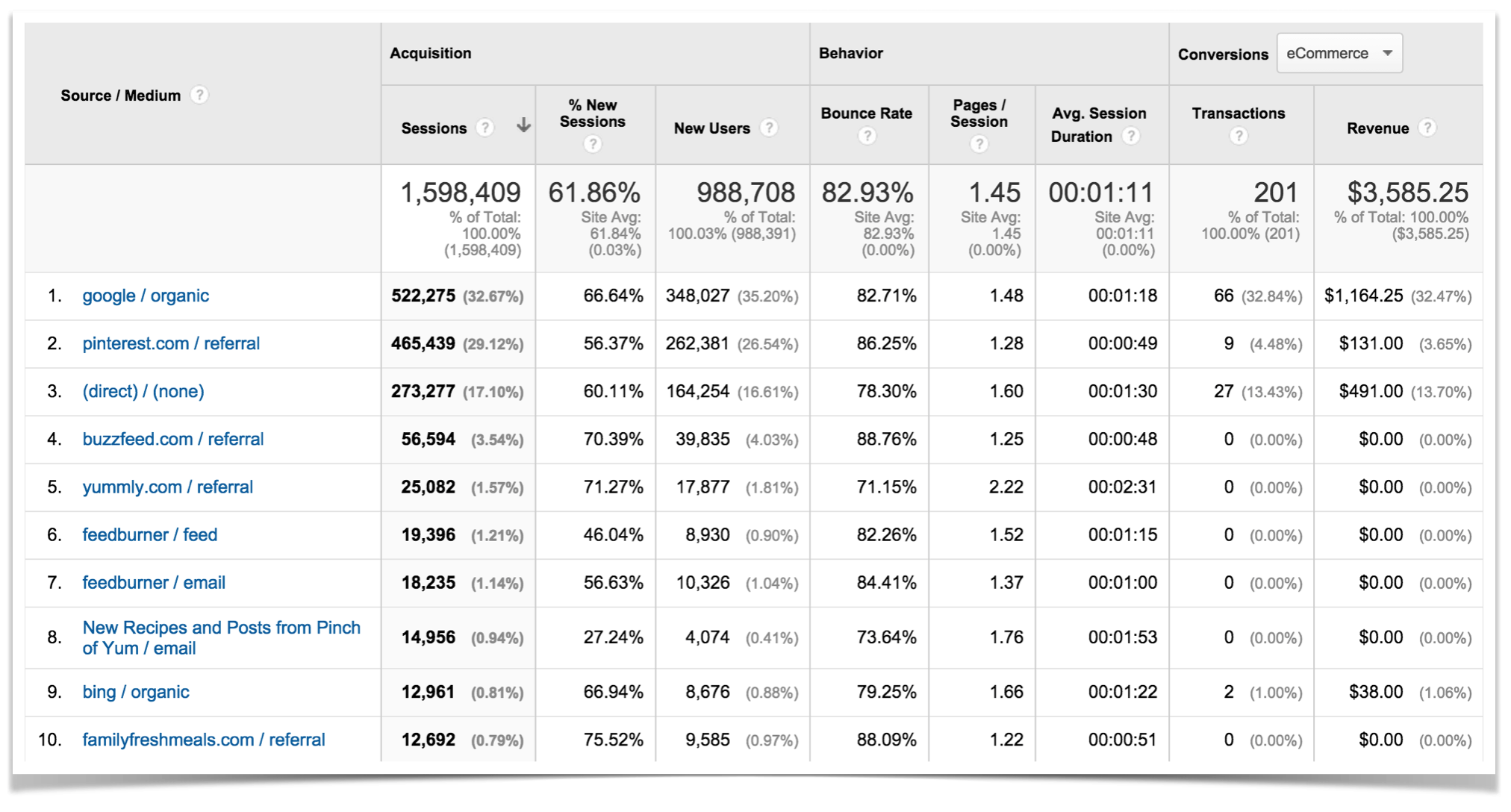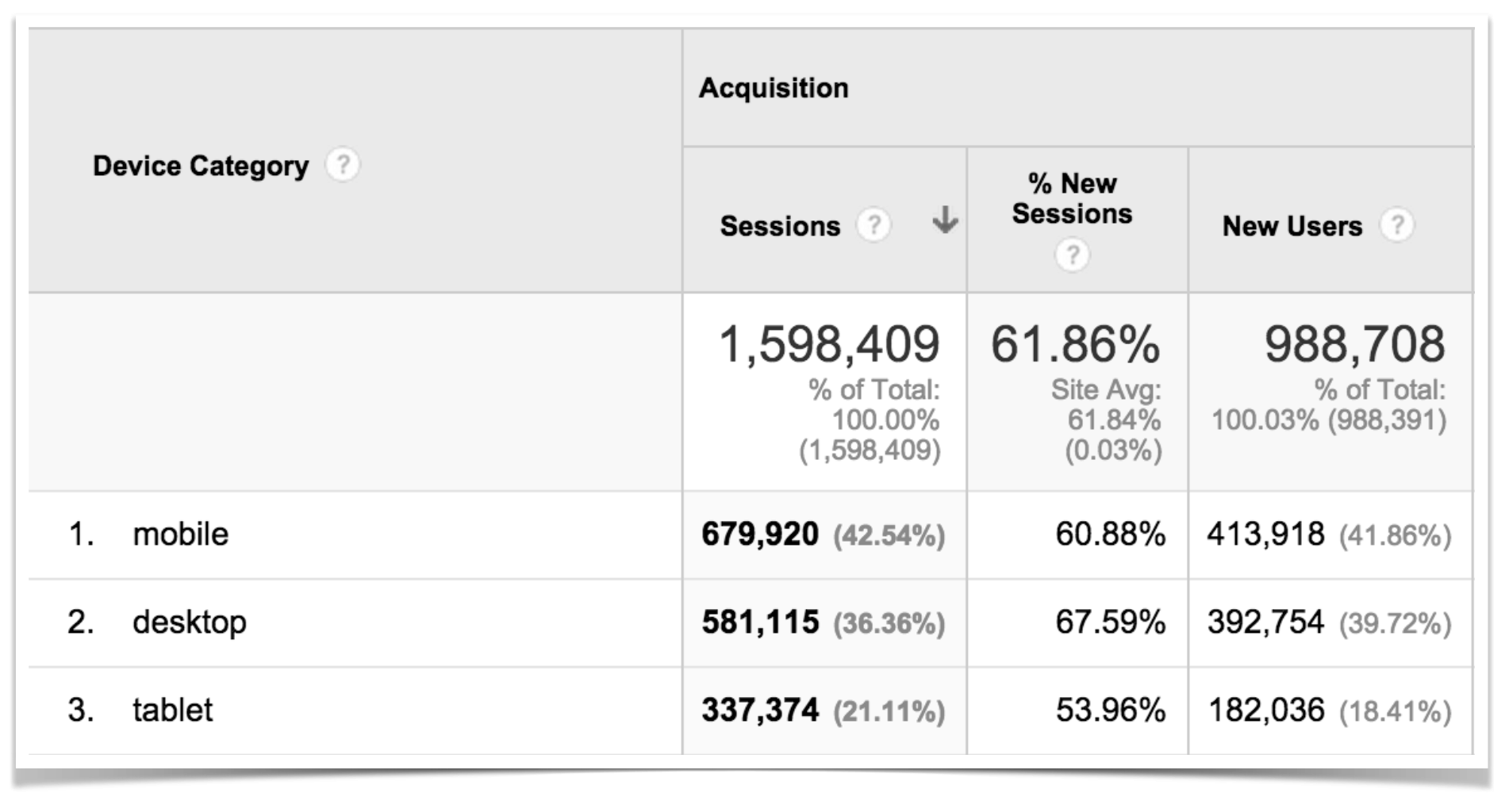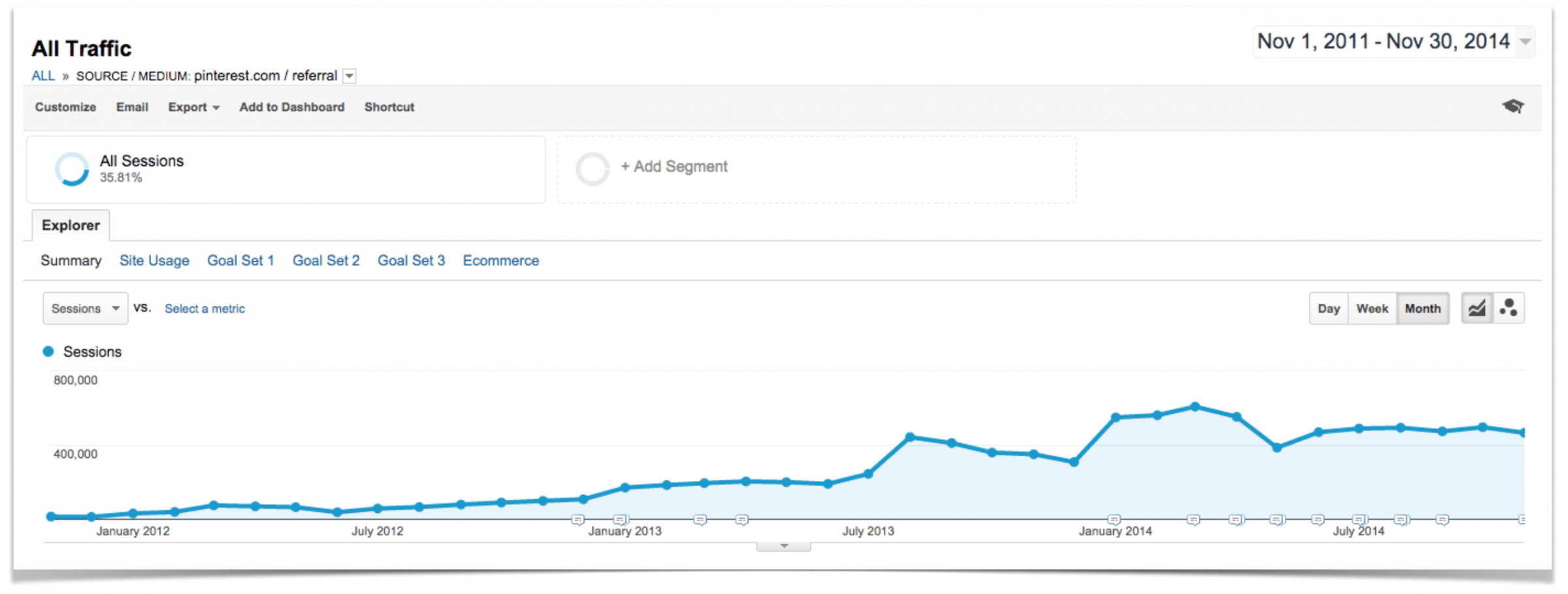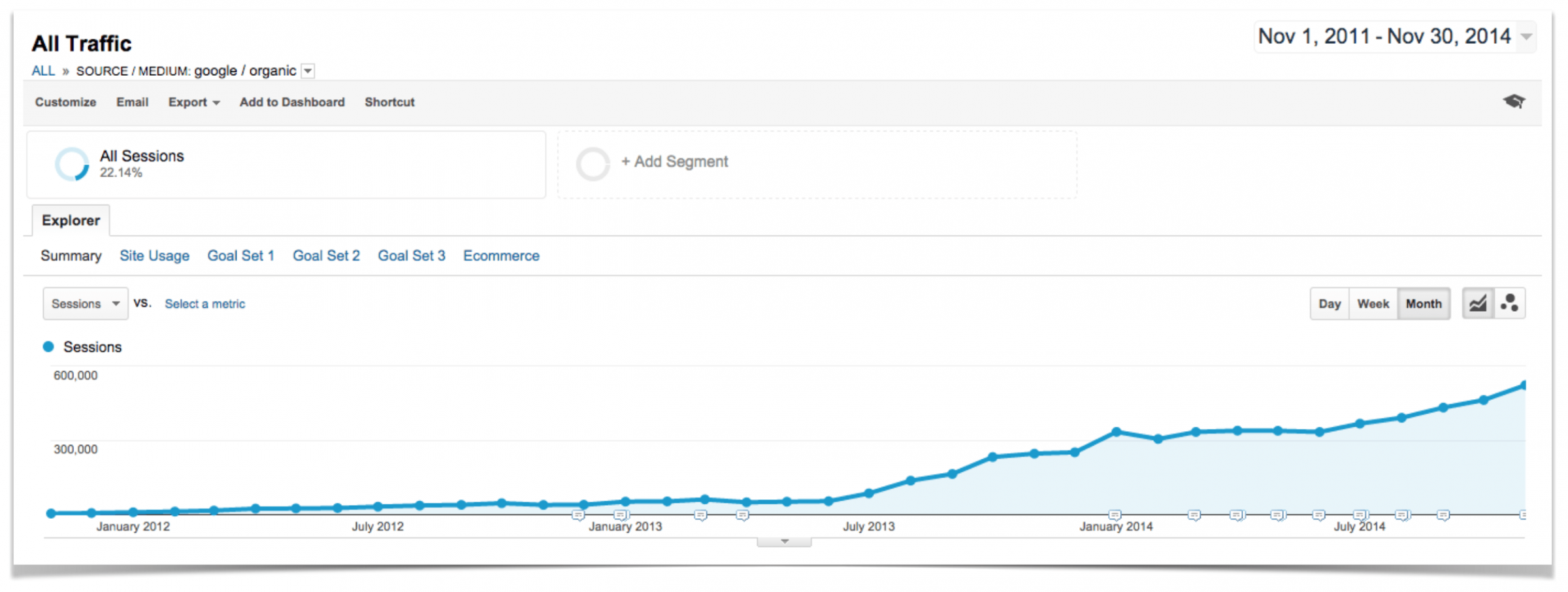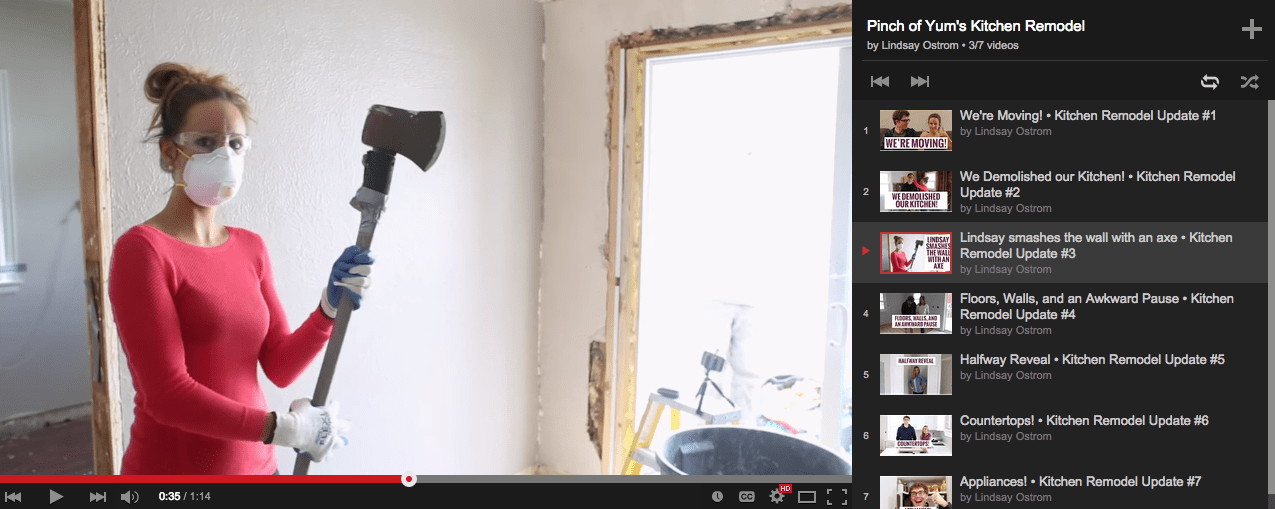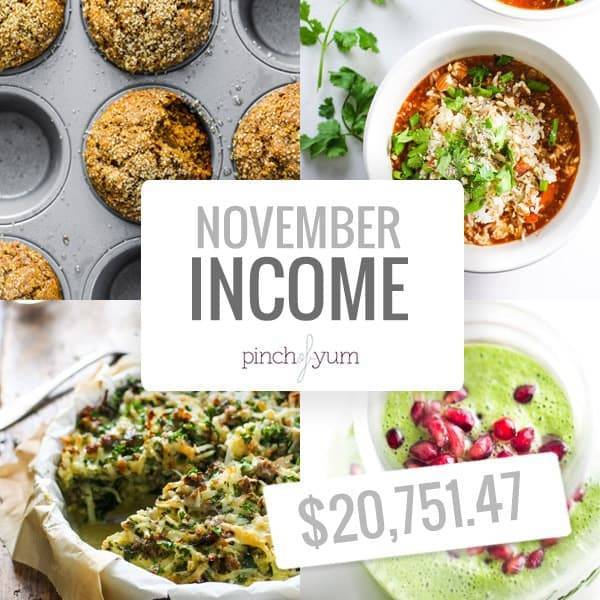
Oh hai there!
Bjork here, checking in for the monthly traffic and income report for Pinch of Yum. We’ve done 39 of these reports over the past few years. We’ve written them everywhere from Cebu, Philippines to Three Lakes, WI to St. Paul, MN.
The location has changed but our purpose hasn’t. The purpose is to provide a behind the scenes look at Pinch of Yum, including the things we’re doing to create an income from the blog and build readership. What’s working, what’s not working, and what we think might work.
Before we jump into the numbers I want to review a few items that are important to understand.
It’s a Lot Of Work To Create An Income From a Website Or a Blog.
If you’re planning on starting a blog and working on it for a few hours a week then it will never create a substantial income, or if it does it will take a really long time to get there. Creating an income from a blog takes an incredible amount of time and energy.
It’s Possible To Create An Income From a Website Or a Blog.
I get emails every week from bloggers that have reached different milestones with their blog. Just this month I received an email from a blogger that reached $500/month for the first time and another email from a food blogger that made $40,000 in her first year of blogging. It’s a lot of work, but it’s possible.
We’ve Had Two People Working On This Over a Long Period Of Time.
Lindsay and I have been working on Pinch of Yum since 2010. That’s almost five years that two people have been working on one site. That’s a lot of time and energy! These reports have the potential to be misleading if you don’t keep that in mind. It’s not just one month of work, it’s the cumulative effort of five years.
With that in mind, let’s look at the numbers for November.
A quick note: Some of the links below are affiliate links. All of the products listed below are products and services we’ve used before. If you have any questions about any of the income or expenses you can leave a comment and I’ll do my best to reply.
Income
- Bluehost – $6,785 –> this income comes from a page where we show people how to start a food blog in three easy steps.
- sovrn – $4,907.71
- Tasty Food Photography – $3,736.50
- Sponsored Posts/Speaking – $3,200.00
- Yellow Hammer Media – $2,938.19
- BlogHer – $1,392.45
- Google AdSense – $1,018.86
- Ziplist – $765.48
- Genesis Theme – $705.05
- The Blogger Network – $692.20
- Photo Licensing – $500.00
- Gourmet Ads – $383.55
- Amazon Associates – $335.45
- The Creamy Cauliflower Sauce eCookbook – $297.00
- Everyday Healthy eCookbook – $270.00
- Elegant Themes – $182.50
- How to Monetize Your Food Blog eBook – $92.50
- AWeber – $22.80
Total Income: $28,225.24
Expenses
- Canon EOS 7D Mark II – $1,936.17
- eBook Affiliates – $913.13
- Support Staff – $862.17
- Food Expenses – $818.00
- Media Temple (Hosting) – $549.00
- Amazon S3 and Cloudfront – $489.40
- Facebook Ads – $349.46
- Travel – $301.44
- PayPal Transaction Percentage – $275.49
- MailChimp – $150.00
- Photo Mechanic – $150.00
- Lowel EGO Digital Imaging – $124.95
- Coworking Office Space – $94.33
- Office Supplies/Misc. – $69.67
- LeadPages – $67.00
- Photography Props – $65.08
- Stock Images/Audio – $60.00
- Adobe Creative Cloud – $53.55
- PayPal Website Payments Pro – $30.00
- ViralTag – $28.00
- QuickBooks – $26.95
- VaultPress – $20.00
- Time Doctor – $19.98
- E-Junkie – $18.00
- WP Stream – $2.00
Total Expenses: $7,473.77
Net Profit: $20,751.47
If you’re interested in learning more about some of the ways that you can monetize a food blog, we encourage you to download this free ebook, “16 Ways to Monetize Your Food Blog,” from our sister site, Food Blogger Pro!
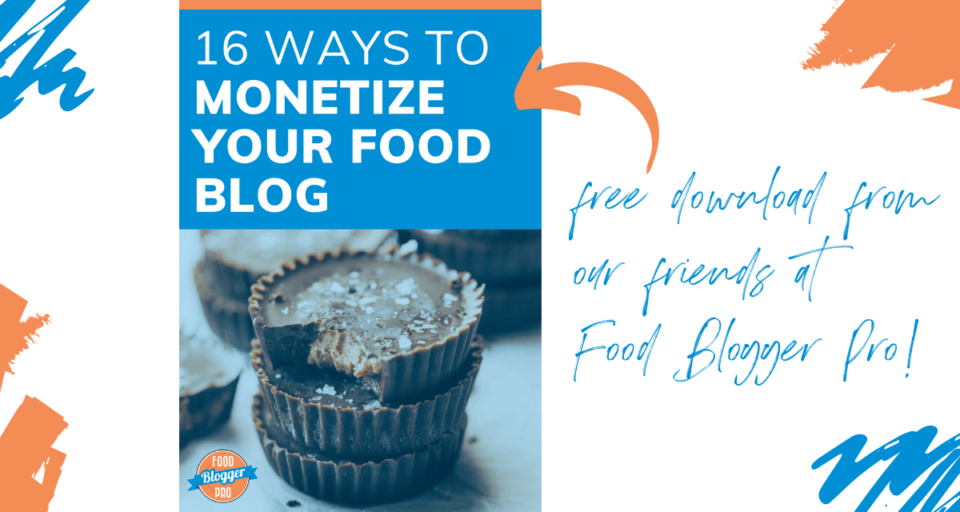
Thoughts On Income
Robots Are Taking Over The World!
Okay, not really, but they’re starting to take over the digital advertising space.
It’s called Programmatic Advertising. Have you heard about it?
Here’s the quick explanation:
Programmatic ads = machine-to-machine
Direct sale ads = human-to-human
Here’s the longer explanation:
(Warning: generic statement below)
Technology is always advancing.
We know that, but what’s exciting to me is when we can stop, look around, and see it changing right in front of us. For example, right now I can look at the income totals from different ad networks we work with and notice a shift in the top performers when compared to previous income reports.
The most obvious is the change in income that we’re seeing from BlogHer. Over the past few months, it’s continued to perform much worse than previous years, while other ad networks (like sovrn) had stayed pretty consistent.
Why is that?
To be honest, I don’t know all of the reasons, and I’m sure there are many. However, I do know that there’s one element that’s sure to play into things.
ROBOTS!
Or, to be more precise, the industry shift to programmatic ads.
The traditional way that a company would sell ad space to a merchant would be the direct sales method. Otherwise known as the “can we schedule a time to chat?” or “let’s grab lunch and talk about this deal,” or “can I take you to the Twins game this week to chat about your ad campaign?” method of selling. Face-to-face, phone-to-phone, human-to-human.
Ad networks would sell a block of impressions to the merchant. When the campaign goes live those ads start to show on publisher’s websites that are part of that ad network.
But as technology has advanced (ROBOTS!) so has the ability to track and segment a person’s online profile. This ability to track people, along with the ability to do real-time bidding (think eBay auction for an ad impression), provided a more efficient way for merchants to advertise.
Now, instead of buying a generic block of ad impressions from an ad network, a merchant has the option to bid on impressions for 20–30-year-old active females that live in the Midwest. Or, for a more generic example, the merchant can bid on ads that will show on food-related sites. They might say “we’ll pay $1 CPM to show ads on food-related sites.” If another company comes along and decides to pay more (say $1.25 CPM) then ads from the first company won’t show.
Chances are that the advertiser and the ad network will never interface. It’s all done machine-to-machine.
The downside for the publisher (that’s you if you’re a blogger) is that your ads aren’t curated and reviewed as they would be with a direct sales ad network. The virtual filters are a little bit wider, which means that it’s easier for the flies (i.e. crummy ads) to get in.
There is potential upside though in that the performance of ads is what sets the price you (the blogger) is paid, not a person-to-person negotiation. If more people click on an ad and follow through with a purchase (or download or whatever it is the company wants…) then you’ll get paid a better rate, because technology allows for that information to be tracked. If the ads “work” on your site, companies will pay more. The downside is that if ads don’t work, then companies will scale back their spending.
We’ve found the latter to be the most common scenario.
The obvious way to increase your earnings is to place the ad in a more prominent area, like within the post content or “stuck” to the sidebar when people scroll.
The bottom line:
- Programmatic advertising is becoming increasingly popular. It’s important to understand.
- It’s harder to have truly “curated” ads when using programmatic ad networks.
- Display advertising will continue to move towards performance-based pay.
Buzzfeed – I Love You, I Hate You.
I love Buzzfeed.
I hate Buzzfeed.
Or said more succinctly, I hate it because I love it.
Know what I mean?
I hate it because Buzzfeed does such a good job of getting people (i.e. me) to click on an article and read it when I should be doing something else. I love it because the content is usually easy to read and (most importantly) the content is relatable (it’s like they wrote this article about ME!).
Another reason I love Buzzfeed is because of their business model: They don’t have any banner ads on their site. Zip! Zero! Zilch! The only type of advertising they do is native advertising.
For those that aren’t familiar, native advertising is when the advertising is integrated into the real content as opposed to an unrelated ad unit in the sidebar, footer, or header area. Here’s a recent Pinch of Yum recipe that’s an example of native advertising.
Native advertising works in ways that banner ads can’t.
Here’s why: When someone goes to this post on Pinch of Yum they’re wanting to find one thing: a recipe for eggnog french toast with raspberry sauce. That means they’ll be in the right mindset for hearing about King’s Hawaiian bread.
When King’s Hawaiian sponsors a post about french toast the chances are much higher that the reader is impacted by that content because they’re their state of mind is in harmony with the ad that’s being displayed.

But with a display ad, the user might not be in the right mindset for that product, meaning their interest level (and therefore the effectiveness of the ad campaign) is much lower.
For instance, if someone is looking for a French toast recipe then chances are buying a new coat will be a distant thought, and therefore a banner ad for a coat won’t be very effective.

So if you were a company and you had $1,000 advertising dollars, what would you want to spend it on? 100,000 ad impressions or native content in a blog post or video? I know what I’d choose.
Bottom line:
- The native advertising model is an important concept to understand. It’ll become more common as the direct sales method of display advertising continues to decline.
- While banner based ads are declining in value, powerful native advertising is increasing in value.
- In order to have powerful native advertising, you need an engaged audience (more on that in the “traffic” section below).
Traffic
Below are some screenshots from Google Analytics. You can click on these images to view a larger size.
Traffic Overview
Top Ten Traffic Sources
Mobile Vs. Desktop Traffic
Google > Pinterest
November was the first time (in a long time) that Pinch of Yum had more traffic from Google than it did from Pinterest.
The benefit of traffic from Pinterest is that it can be quick and significant. If something catches on, you’ll see a big spike in traffic. It can happen quickly but it usually doesn’t sustain. The image below shows the traffic to Pinch of Yum from Pinterest over the past three years.
Traffic from Pinterest: November 2011 – November 2014
Google is more of a long-term game. It requires a lot of content, a lot of time, and a lot of little things that add up over time. The image below shows the traffic to Pinch of Yum from Google over the past three years. No peaks or valleys, just slow consistent growth.
Traffic from Google: November 2011 – November 2014
Speaking of traffic…
Traffic Vs. Tribes
The #1 question that we get from bloggers is this:
How do I increase traffic to my blog?
It’s an important question to ponder, but traffic to your blog isn’t the first thing you should be thinking about. Engagement is much more important. Especially as advertisers start to realize the value of a “real” reader (or viewer if it’s video) vs. a generic ad impression.
This should be really good news for the “small” blog.
As a blogger with a lower traffic site, you have infinitely more control over connection than you do over traffic.
So, when you’re planning your next post, think about…
The person, not Pinterest.
Their face, not Facebook.
Sharing your heart, not asking them to share.
Is traffic still important? Absolutely. It’s still important to think about crafting content that is share-worthy, but people that think first about connection and second about traffic will be in a much better place long-term.
Another way to say this would be that a tribe is more valuable than traffic.
Here’s what Seth Godin says about tribes in his appropriately named book, Tribes.
“A tribe is a group of people connected to one another, connected to a leader, and connected to an idea. For millions of years, human beings have been part of one tribe or another. A group needs only two things to be a tribe: a shared interest and a way to communicate.”
Seth Godin
The health (or, first, the existence) of your “tribe” is critical for the long-term success of your blog. Much more so than a viral post or high traffic numbers.
Video (Brought To Life) The Blogger Star
Video killed the radio star, but video can’t kill the blogger star. On the contrary, I think video will bring the blogger star to life. It’s such a powerful tool for connecting and engaging with your audience (see Traffic vs. Tribes for an explanation of why this is important).
Lindsay and I have finally started to get behind the camera to shoot some videos for Pinch of Yum. It’s taken us two years since we first talked about video to actually start doing it.
The biggest thing we’ve learned so far? You have to “just do it.”
The house could always be cleaner, the lighting could always be better, and there could always be a little bit more time.
But if we were to wait for all of that stuff to fall into place then we’d never press the record button.
We’ve been building up our video skillz by doing kitchen remodel updates, but we’ve also gotten some “real” recipe videos shot, a few in the basement and another one in the almost finished kitchen.
I’ve published a couple of posts on Food Blogger Pro about our video process, including the gear we use for videos and 3 quick tips for editing in Final Cut Pro.
We still have a lot of learning to do with video though, so I’d love to hear from you: What YouTube channels do you love? What do you like about them? What would like to see from a Pinch of Yum YouTube channel?
Because Of You
It’s because of you that this thing we call Pinch of Yum can exist as it does today. Thanks so much for reading, tweeting, commenting, emailing, and sharing these recipes with your families and friends. We are so thankful for you!
Every month we use a portion of the income from the blog to support a special project at The Children’s Shelter of Cebu. We consider it a gift from the entire Pinch of Yum community, not just Lindsay and I. This month we’re supporting CSC in purchasing Christmas gifts for the (over 100!) kids at the shelter.

The post November Traffic and Income Report – $20,751.47 appeared first on Pinch of Yum.

